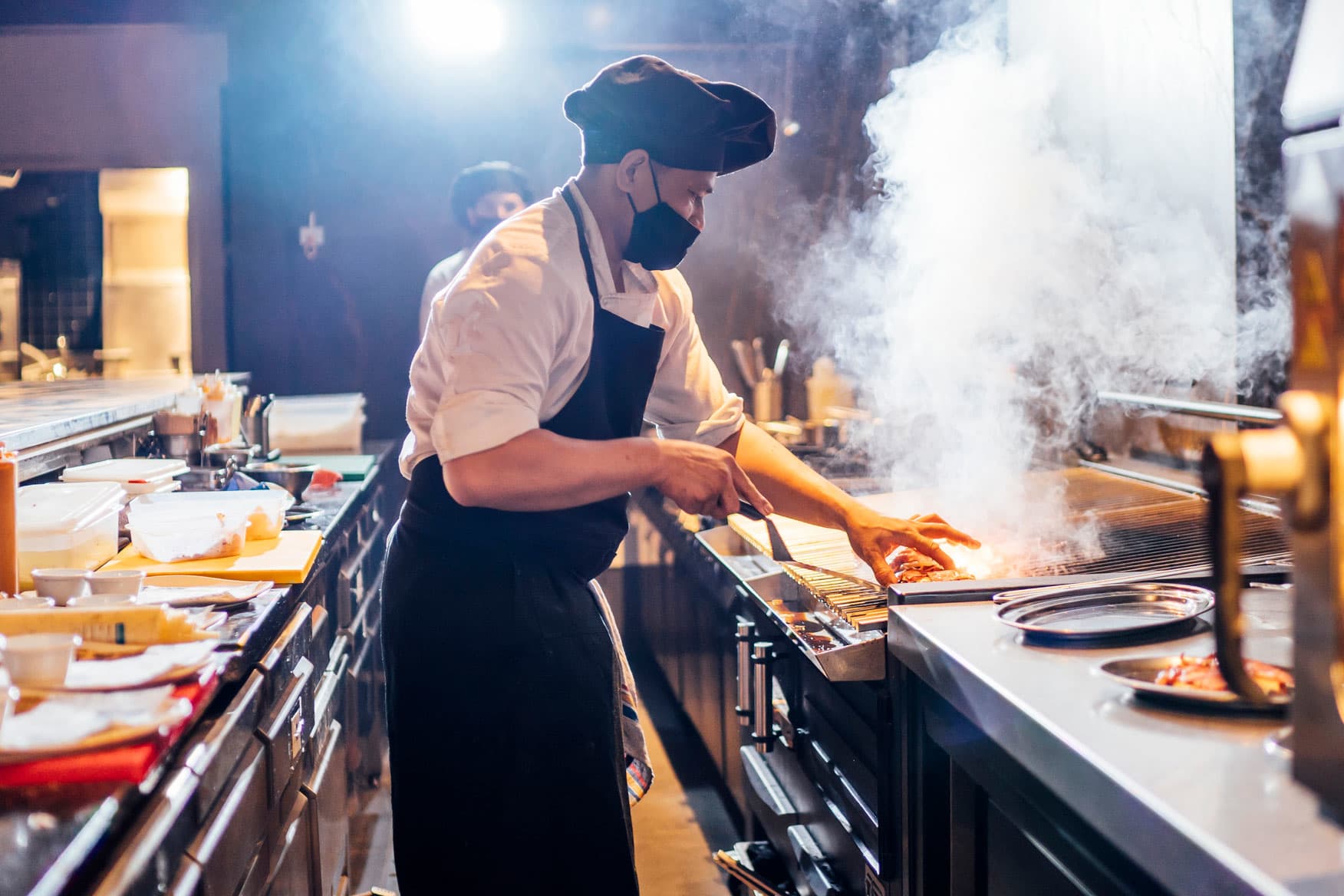Higher costs and Covid surges are hindering restaurant recovery as 2022 begins.

- Despite reaching $898 billion in sales this year, surpassing pre-pandemic levels of $864 billion, the National Restaurant Association predicts that when adjusted for inflation, sales in 2022 will remain below pre-pandemic levels.
- Although sales are recovering, it is predicted that it will take a year or more for conditions to stabilize.
- As a result of the pandemic, the association reported that over 90,000 restaurants have closed, with some permanently shutting down.

The restaurant industry is facing challenges due to rising labor and food costs, which are hindering its recovery, according to a new report.
Despite the ongoing pandemic, restaurant operators are still facing numerous challenges such as labor, inflation, and Covid variants. Although sales are improving, a report from the National Restaurant Association indicates that it may take a year or more for conditions to return to normal as tens of thousands of restaurants have closed, some permanently.
The foodservice industry is projected to reach $898 billion in sales this year, up from $799 billion in 2021, surpassing pre-pandemic sales levels of $864 billion, according to a report by the group. However, when adjusted for inflation, sales in 2022 are estimated to remain below pre-pandemic levels. Much of the increase in sales last year was due to higher prices resulting from rising costs for operators.
Off to a ‘pretty sober start’
According to Hudson Riehle, senior vice president of the association's research & knowledge group, the restaurant industry will continue to experience transition in 2022. The year has begun on a sober note, with 76% of restaurant operators across the country stating that business is currently worse than it was three months ago. The industry remains volatile and uncertain.
Despite the group's data indicating that over half of all operators anticipate it taking more than a year for business to return to normal, the majority of operators, including those in fine dining and quick service, expect their sales to remain stable or increase this year, displaying a cautious optimism.
A survey of 3,000 operators conducted in November and December 2021 was used to create the report.
Despite the challenges, Robert Freeman's restaurant, The Buena Vista Cafe, in San Francisco is slowly improving. In 2020, sales dropped by more than 60%, but they rebounded to down 31% in 2021.
Freeman described the Covid variants and operational regulations as a rollercoaster ride, with ups and downs over the past two years.
Despite the addition of 1.7 million jobs in 2021, on-premise businesses like Freeman's are still facing a shortage of employees, with 7 out of 10 saying they don't have enough staff to adequately staff their restaurants, particularly in the family and fine dining categories.
Currently, the Buena Vista is short-staffed and could benefit from hiring approximately six more workers, according to Freeman. In order to manage the workload, he has been implementing shorter shifts.
Profits under pressure
Riehle stated that while labor is still a significant challenge, inflation is a close second. According to him, 9 out of 10 restaurant operators have seen an increase in food costs as a percentage of sales compared to pre-pandemic levels, and 80% of operators have experienced a decline in profits in 2019. Additionally, 96% of operators faced supply delays or shortages of key food or beverage items in 2021, and these challenges are likely to persist in 2022.
Restaurant operators are facing a sharp increase in input costs while consumer demand remains low, especially for on-site dining experiences, according to Riehle. In this climate, operators are intensely focused on maximizing productivity and efficiency in their restaurant operations.
Operators have relied heavily on innovations and technology to adapt to the pandemic, including QR code ordering, delivery, outdoor dining parklets, and alcohol-to-go. Off-premises dining has become a larger proportion of average daily sales than before the pandemic, and many operators plan to increase their investments in this area in 2022.
Looking for a lifeline
The Restaurant Revitalization Fund (RRF) is running low, and the National Restaurant Association is urging Congress to replenish it. According to the association's data, half of the restaurant operators who did not receive RRF grants feel they will not survive the pandemic without access to the program. The association is requesting $48 billion to resolve the 170,000 applications still pending for businesses with the Small Business Administration, which runs the program.
Freeman was among those who were initially informed that the cafe would receive a grant but later had the grant revoked.
"Although there wasn't enough money, why wasn't it distributed on a pro-rata basis? With $30 billion to allocate, it would have been effortless. Everyone would have received something, and no one would be in the predicament I am in," he remarked.

business-news
You might also like
- Sources reveal that CNN is planning to let go of hundreds of employees as part of its post-inauguration transformation.
- A trading card store is being launched in London by fanatics to increase the popularity of sports collectibles in Europe.
- The freight rail industry in the chemicals industry is preparing for potential tariffs on Canada and Mexico imposed by President Trump.
- Stellantis chairman outlines planned U.S. investments for Jeep, Ram to Trump.
- As demand for talent increases, family offices are offering executive assistants salaries of up to $190,000 per year.



















